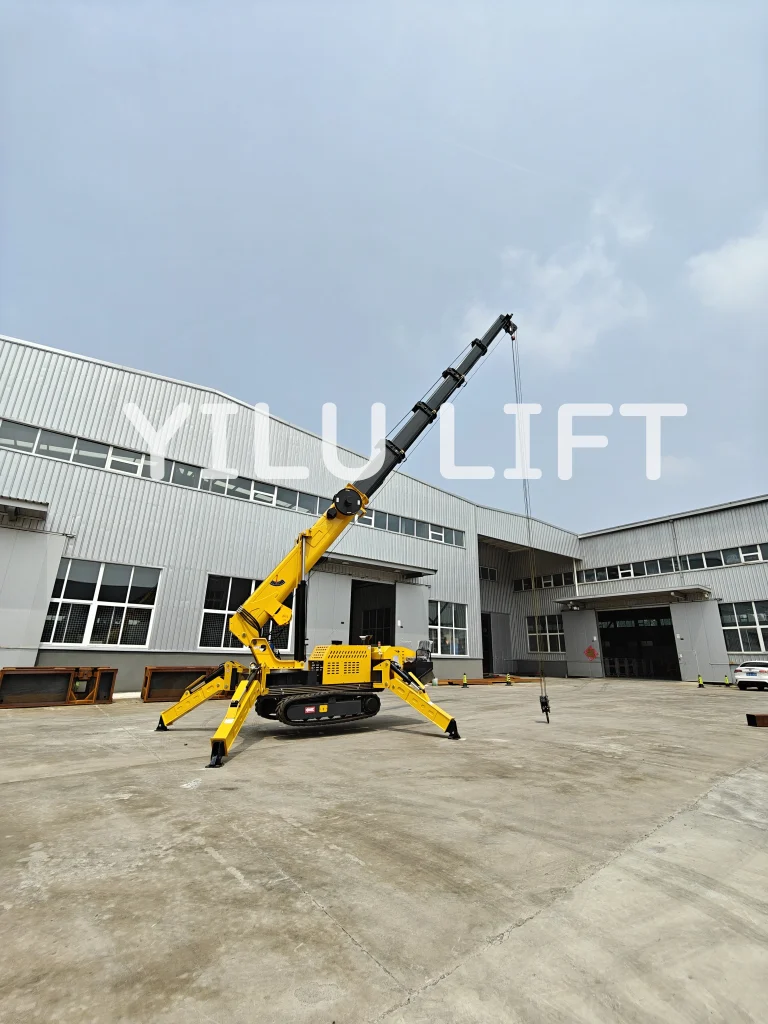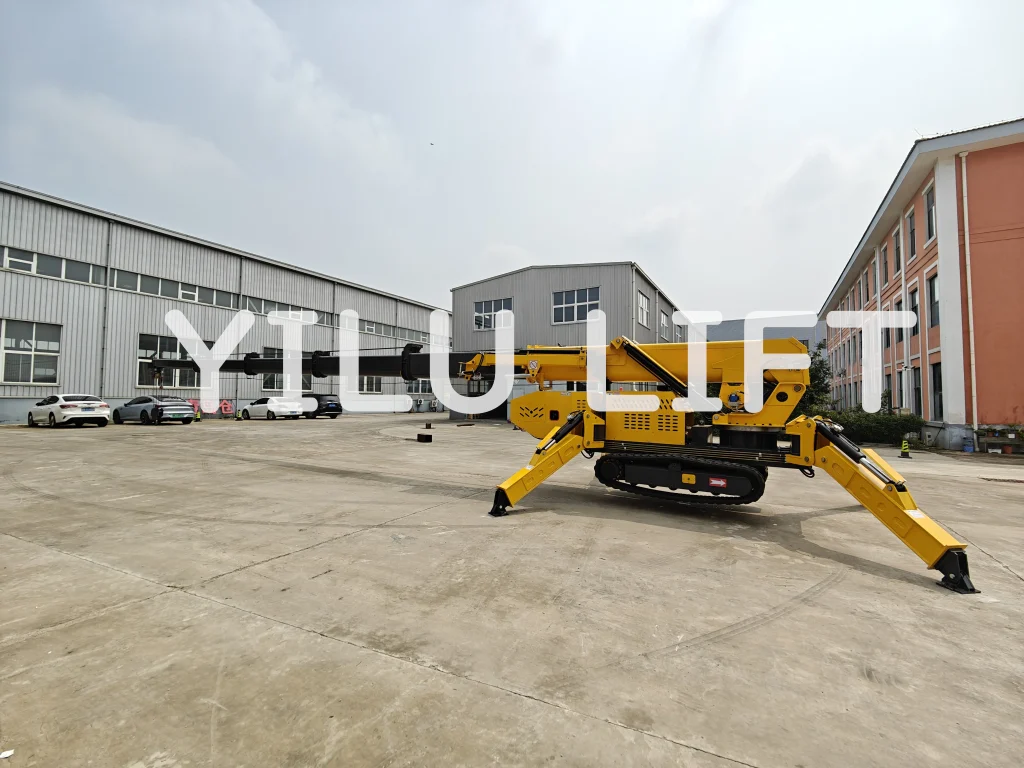How to Choose a Spider Lift Based on Weight Capacity and Budget
How to Choose a Spider Lift Based on Weight Capacity and Budget

Understanding Spider Lifts: Compact Yet Capable
Spider lifts are cool machines that let you work way up high in places big lifts can’t reach. They roll on crawler tracks or wheels with foldable outriggers. These keep them steady on rough ground. They’re awesome for getting to hard spots like tight corners or high walls.
YILU LIFT’s crawler spider lifts are small but super tough. They’ve got strong booms made of manganese steel, hydraulic systems, and you can add wireless controls. These make jobs go smooth, even when things get tricky.

Step 1: Assess Your Project Needs
Determine Load Requirements
First, figure out what you’re lifting. Think about the person, tools, and stuff you need up there. Most spider lifts can carry 1-18T, depending on their size.
YILU LIFT’s spider lifts come in tons of sizes, from 1.2 tons to 18 tons. They’re great for little jobs like fixing wires or big ones like building houses.
Evaluate Height and Outreach
Weight’s just one thing. You also gotta know how high and far you need to go. Regular spider lifts reach from 10m to 36m up. If you need to stretch over stuff like fences, get ones with JIBs. YILU LIFT has neat vice JIBs and hydraulic JIBs up to 5 meters long.
Factor in Site Conditions
What’s the ground like? Is it flat, bumpy, or sloped? Are you working inside or in narrow spots? Spider lifts with crawler tracks, like YILU LIFT’s, rock on soft dirt or building sites. Electric ones are super quiet, so they’re perfect for places like stores or airports.
Step 2: Understanding Weight Capacity
Typical Capacity Range
Spider lifts are rated by how much they can hold. Tiny ones lift about 200 kg. Big ones can carry over 1000 kg for heavy work.
YILU LIFT’s spider lift series lets you choose the right weight limit. They’ve got tough booms and overload protection alarms. These keep your work safe and fast.
Safety Margins
Don’t load a spider lift to its max. Leave a 10-20% extra space. This stops it from wearing out and keeps it working great, even on hard jobs.
Step 3: Power Source and Drive Options
Picking the right power type changes how your spider lift runs, how green it is, and how much it costs.
- Electric Spider Lifts: Really quiet, no stinky smoke, awesome for indoor stuff.
- Diesel Spider Lifts: Strong for outside jobs that take all day.
- Dual-Power or Hybrid Models: Great for both inside and outside work.
YILU LIFT has all these kinds. They follow American EPA and European Stage V rules to keep the air clean.
Drive types are important too:
- Towablemodels are cheap but need a truck to pull them.
- Self-propelled crawlerspider lifts move by themselves. They’re perfect for rough ground.
Step 4: Budget Considerations
Purchase vs. Rental
If you use a spider lift a ton, buying one saves cash in the long run. If you only need it now and then, renting’s better. Buying means you gotta pay for a place to keep it, insurance, and fixing it up.
Pricing by Load Class
- Light-duty spider lifts(200–300 kg): $25,000–$45,000
- Medium-duty lifts(400–800 kg): $45,000–$80,000
- Heavy-duty units(1000+ kg): $80,000–$120,000+
YILU LIFT keeps prices low. They build their own spider lifts and sell to over 100 countries without extra people raising the cost.
Don’t Forget Hidden Costs
Think about other stuff you’ll need to pay for:
- Safety rules like ANSIor EN1570
- Training for people who drive it
- Extra parts and fixing it
- Cool add-ons like remote controlor smart screens
Step 5: Compare Features and Models
YILU LIFT’s spider lifts have neat extras to make work safer and quicker:
- Wireless remote controlwith a screen
- Torque alarm display
- One-button outrigger leveling
- AC electric plug-ins
- Self-diagnostic smart monitoring system
- Vice JIB extensions(2m to 5m)
Getting the right extras from the start saves time and makes your spider lift super worth it.
Step 6: Safety and Certification
Pick a spider lift that follows big safety rules like:
- ANSI/ASMEin the U.S.
- EN1570in Europe
All YILU LIFT spider lifts come with:
- Anti-pinch scissor arms
- Emergency stop buttons
- Hydraulic overload protection
- Safety sensorsunder platforms
- Anti-slip aluminum platforms
YILU LIFT also gives you papers and tips to meet local safety rules.
Step 7: After-Sales Support
YILU LIFT helps you tons after you get your spider lift:
- Tech tips
- Custom lift setups
- Extra parts packs
- Fix-it help from far away
- Training for drivers
Their team works all over the world, so you get help quick, no matter where your job is.
Conclusion: Making the Right Choice
Picking a spider lift isn’t just about the price. It’s about lifting safe, fast, and right for your spot. With YILU LIFT Intelligent Equipment, you get more than a machine. You get a special, super cool spider lift with help from all over and neat new ideas. So contact YILU for more information.
FAQs
Q1: What’s the average weight capacity of a YILU LIFT spider lift?
A: YILU LIFT spider lifts usually hold 300 kg to 1000+ kg, depending on the model and boom kind.
Q2: Can I use YILU LIFT spider lifts on rough ground?
A: Yes! Our crawler models have automatic telescopic outriggers and tracked chassis. They’re awesome for bumpy or slanted ground.
Q3: What extra stuff makes YILU LIFT spider lifts safer and quicker?
A: Neat add-ons like torque alarm display, wireless remote with LCD, vice JIB extensions, and one-button leveling systems help a lot.




